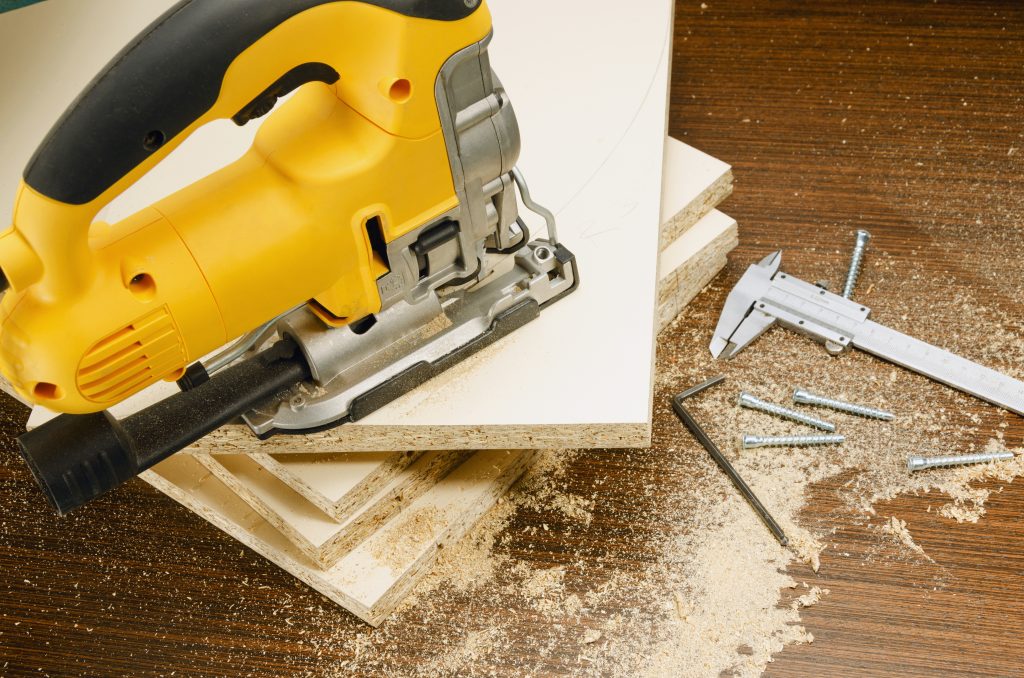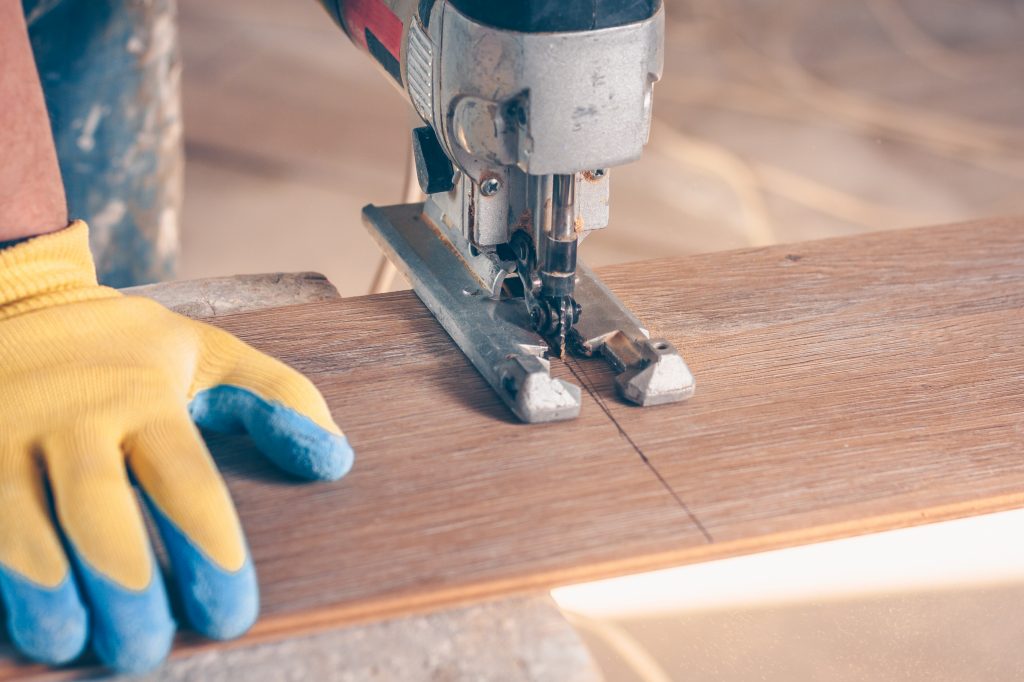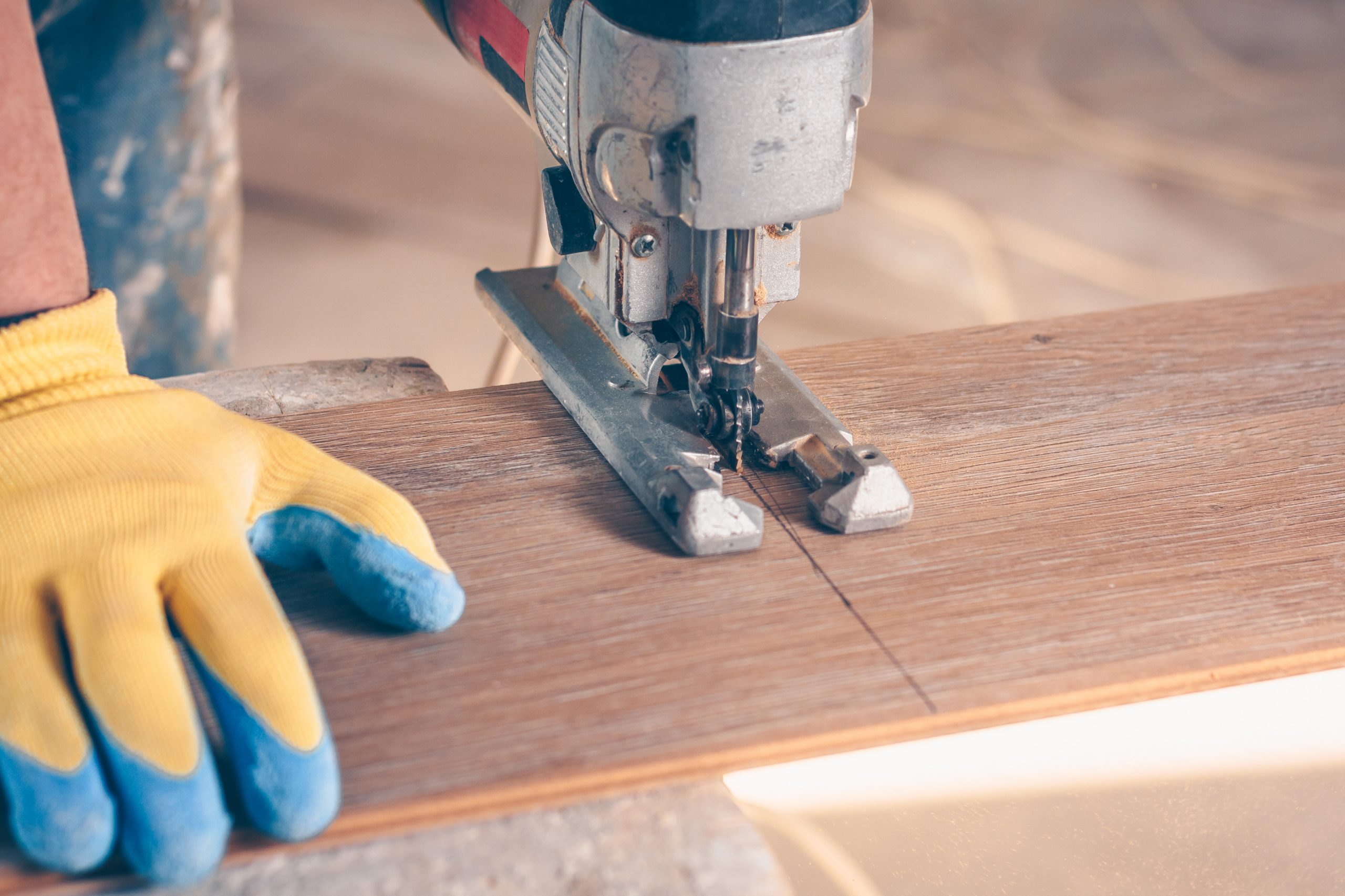When you think of a jigsaw, you think of a power tool indispensable to your workshop. This tool can cut through wood as well as many other saws. However, it can also go beyond woodwork. The jigsaw is such a versatile tool that can cut different boards and create unique holes in any material you need, as long as you use the proper blade for the work.
A jigsaw is a tool you will need at different levels of a cutting job, and it gives the best results when applied the right way.
The two major categories of the jigsaw are corded and cordless jigsaws. Corded jigsaws are operated by plugging into a receptacle and are not as portable. On the other hand, cordless jigsaws are very mobile, and they use electricity or rechargeable batteries.
Jigsaw blades have different ripping capacities, usually based on the blade’s cutting edge. When selecting your blade, it’s essential to know what type of cut it can give.
If you’re considering getting a jigsaw, here are some important things you should know.

Capabilities of the Jigsaws
There’s a long list of jigsaw capabilities, and the most determining factor is the blade in use.
Straight cut
Jigsaws are popular for creating rip and straight-edge cuts. For this purpose, you’ll need a wider blade to make the cutting easier. With that, all you need to do is guide the jigsaw along a straight edge or follow a straight line carefully to get your perfect straight line.
Curved and Circular Cuts
Jigsaws usually have thin blades that also fit into tight spaces. For these reasons, it’s easier for the blades to follow a curved line and give a curved cut.
Circles are perhaps the easiest to cut, and you may be able to do it either with freehand or with a circular cutting guide.
Cordless jigsaws make this type of cutting easier to achieve. If you are in the market for a new jigsaw, I highly recommend looking at all the best cordless options.
Bevel Cut
A bevel cut is another cut you can achieve with a jigsaw because of the pivoting shoes positioned around the blade.
These shoes allow you to set the blade at any angle (from 0-45 degrees usually) you desire and make bevel cuts from that position.
Plunge Cut
One of the reasons jigsaws stand out is because they can make this kind of cut. Plunge cuts are helpful for letterboxes and electrical fittings.
But unlike the other cuts, plunge cuts always begin in the middle and extend to the edges. To achieve this cut, you’ll want to use a drill to make a starting point for your blade. I don’t recommend trying to start a new cut by using the jigsaw; it will most likely bounce around uncontrollably.
Top 6 Uses for the Jigsaw
As mentioned earlier, there are several materials you can use a jigsaw to work on in your shop. From sheet metal to ceramic tile, here are some of them:
Wood
Jigsaws are most popular for cutting wood more than any other material. From plywood to softwood, jigsaws can cut through quickly because of how thin their blades are. You can cut curves, straight lines, holes in countertops, and any type of wood shape you need.
When doing DIY projects such as the ones you can find on Industry DIY, a jigsaw can sometimes be an indispensable tool. Look at jigsaw brands that may share the same battery system as your other tools.
Metal
Most jigsaws can cut sheet metal. On the face level, cutting metal may seem pretty tricky to achieve. However, a typical portable jigsaw has the power to cut through a 10-gauge thick metal sheet. You will still need to stick to relatively thin sheets and avoid intricate shapes, but it is certainly doable.
Typically, people assume metal shears are the perfect tools to use on metals. Jigsaws are, however, a frequently better choice when considering accuracy, user fatigue, and safety.
It’s advisable to place the same size plywood beneath and support the metal sheet with stapling in place whenever you want to cut metal with a jigsaw. After cutting the metal, use sandpaper to smoothen the edges.
Carpet
Many people aren’t aware of how easy it is to install their carpet with a jigsaw. Instead of using regular knives or razor blades, you can take the carpet measurements, draw patterns beneath the carpet, and use a jigsaw to cut out the accurate size and shape you need.
Take the cutting slowly and watch out for your blade edges to achieve the best result. You may have to use multiple blades through your cutting process, but this is normal for most jigsaw applications.
Tile
Cutting tiles requires a little more expertise and patience than other materials. You need the right kind of (carbide-grit ceramic) blade to get the best results.
Concrete
Cutting concrete materials may be a tough job, but a jigsaw can make some thinner cuts with the right blade. Using the wrong blade can reduce the jigsaw’s lifespan, so you need to pay more attention to concrete cutting.
Concrete boards have different density levels –some heavy-weight, others quite soft. Whichever category your concrete falls into, a jigsaw could be a good option depending on the job.
Pumpkin
Most people assume that the easiest way to carve a face on a pumpkin is with a knife, but sometimes a jigsaw can be best for these curved cuts. Pumpkin skin is tough, but it’s nothing that a jigsaw can’t cut through.
Don’t forget to use your jigsaw to carve out your imaginations quickly and safely before next Halloween.
Lamination
You can easily install laminated flooring in your house using a jigsaw. The blades have the right balance of thinness and density to cut through this type of flooring.
Cut the lamination with the bottom facing up to avoid saw chipping and tear-out. Again, you may look for a special lamination blade to help you accurately cut these materials. The blade sometimes makes the difference between a clean cut and a messy one.

Advantages of the Jigsaw
From these uses, it’s easy to draw out some of the significant benefits of using a jigsaw. Apart from its multi-purpose cutting and maneuverability, some other advantages are:
Simplicity
Using a jigsaw is relatively easy. You’ll be able to use a portable jigsaw no matter your experience level.
It’s as easy as inserting the right blade, plugging in or inserting the battery, and pulling the trigger to cut. Jigsaws also don’t take up much space and are easy to handle and maintain.
How to Use the Jigsaw
We will include a brief overview of how to use a jigsaw here. To use a jigsaw, follow the steps below. Be sure to exercise the best safety practices when working with any power tool.
- Select the right specialized blade that fits the type of material and cutting you’re trying to achieve.
- Use clamps to hold down your workpiece and make accurate cuts. You should also guide your blade and cutting process with guide rails.
- Mark out the shape or size of the material you want to cut out to make your work easier.
- Ensure that you don’t force your blade through any material. Doing this will help prevent damage and injury.
- If your jigsaw is corded, keep an eye on the power cord extension to avoid hitting the cord with the blade as you cut.
- Very importantly, maintain safety throughout and after the cutting process. Wear all recommended personal protective equipment like eye and ear protection.

Final Thoughts
The jigsaw is a vital power tool you’ll need for different projects because it can cut through various materials and create multiple different shapes.
It’s easy to use, safe, portable and has enough power to create various shapes and sizes of workpieces, as long as you use the right blade.
For more information on the best tools for getting started woodworking, you can find my picks for the top 6 tools you should have.
